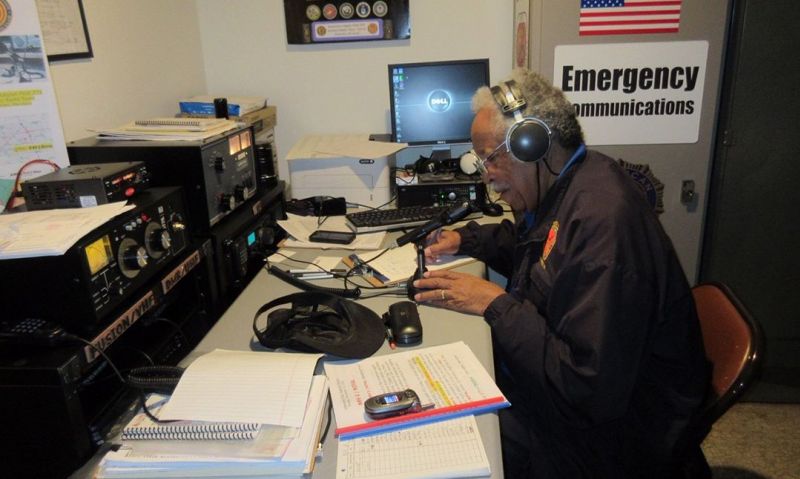
TALARC network operations informative, valuable and enlightening
In 2010, National Convention Resolution No. 134, “The American Legion Role in Homeland Security,” urged Legionnaires, posts and departments to assist in Homeland Security efforts in communities – for example, by developing emergency kits and plans; by remaining informed and assisting families, schools, workplaces and communities in developing emergency plans and checklists; and by reporting suspicious activity or working with community-based organizations.
In support of this resolution and previous resolutions on the same subject, The American Legion Amateur Radio Club was created. Almost from its very inception in 2011, TALARC has conducted monthly network operations, or “nets,” from within or near the National Headquarters city of Indianapolis, as well as from net control stations operated by TALARC members across the nation.
Through the years the several modes of communication have included HF, both 20 meters and 40 meters; D-Star [Digital Smart Technologies for Amateur Radio]; IRLP [Internet Radio Linking Project]; and EchoLink, a computer-based amateur radio system. Each month two of the nets are conducted on the second Saturday, one on the first Monday, one on the second Wednesday, and two – which could be considered national/regional nets – operate weekly on Wednesdays and Thursdays.
The number of check-ins has been rather constant over time, with some months better than others (of course). Recently, it has been common to have 100 or so check-ins when the individual net numbers are combined. And that’s not bad. But with more than 4,100 card-carrying TALARC members across the country, it doesn’t seem unreasonable to expect the numbers to be higher, especially given the varied schedule and the different bands and modes used.
Amateur radio nets are conducted for particular purposes, formal and informal, that could include facilitating emergency operations in disaster situations, or just discussing specific items of interest to a variety of amateur radio operators. For the TALARC monthly nets, that purpose is to facilitate a regular gathering of Legion Family hams for conversation. It's that simple.
Are TALARC nets informative? Yes, because they are opportunities to learn what other TALARC members are doing in different parts of the country. Are the nets valuable? Yes, because they can be a chance to experience a new communication mode, one different from what you may have grown comfortable with. Are the nets enlightening? They certainly can be enlightening when considering that your participation in a net could launch someone else's new TALARC endeavor, based on what you have accomplished for amateur radio and the Legion in your area.
Whatever it is you might expect from net operations, even if it's just listening in to what others have to offer, you'll be speaking to a Net Control Station operator who is happy to greet you, listeners who are eager to hear what you have to say, procedures that are relaxed and conversation that is cordial.
You can find the monthly net schedule posted online at https://www.legion.org/hamradio/monthly-net-schedule. Consider tuning in to one of the nets this month. We'll be listening for your call.
